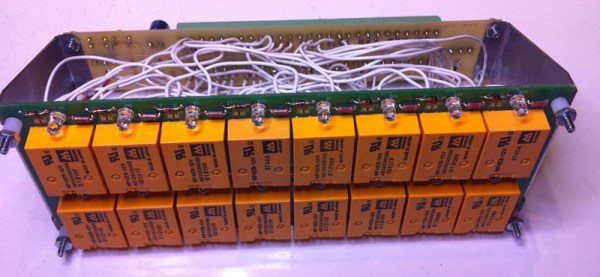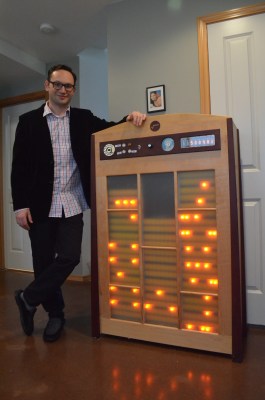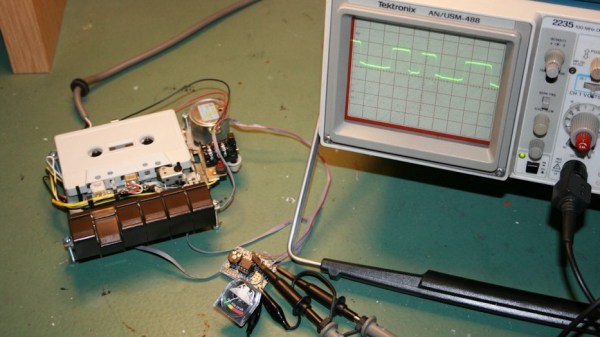After seeing an exhibit of an old relay-based computer as a kid, [Simon] was inspired to build a simple two-relay latching circuit. Since then, he’s been fascinated by how relays can function to do computation. He’s come quite a long way from that first latching circuit, however, and recently finished a huge five-year project which uses electromechanical relays to calculate square roots.
The frame of the square root calculator can hold up to 30 identical relay modules, each of which hold 16 relays on PCBs, for a total of 480 relays. The module-based setup makes repair and maintenance a breeze. Numbers are entered into the computer by a rotary dial from an old phone and stored in the calculator’s relay memory. A nixie tube display completes the bygone era-theme of the device and shows either the current number that’s being entered, or the square root of that number as it’s being calculated.
The real magic of this project is that each relay has an LED which illuminates whenever the relay is energized, which shows the user exactly where all of the bits of the machine are going. [Simon] worked on this project from 2009 and recently completed it in 2014, and it has been featured at the San Mateo Maker Faire and at Microsoft Research in Redmond, WA. We’ve seen smaller versions of this before, but never on this scale and never for one specific operation like square roots.
Video below. Thanks to [Bonsaichop] for the tip!

















